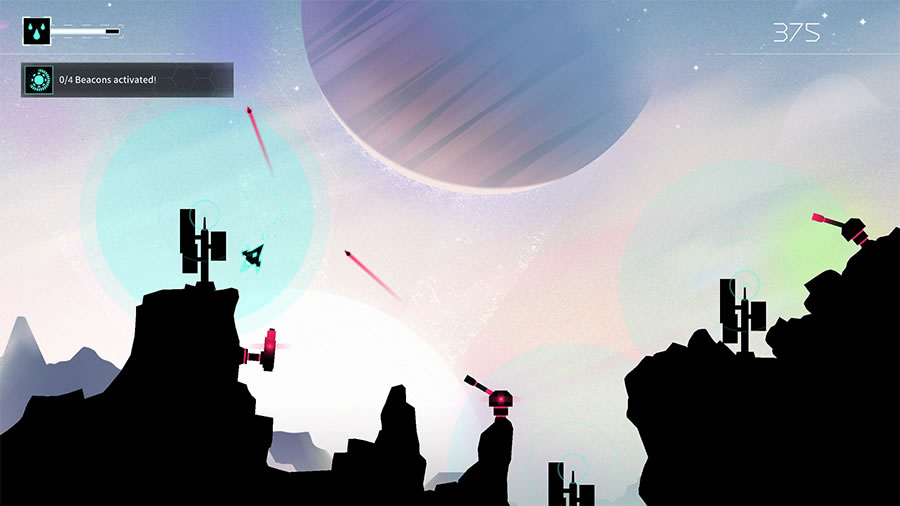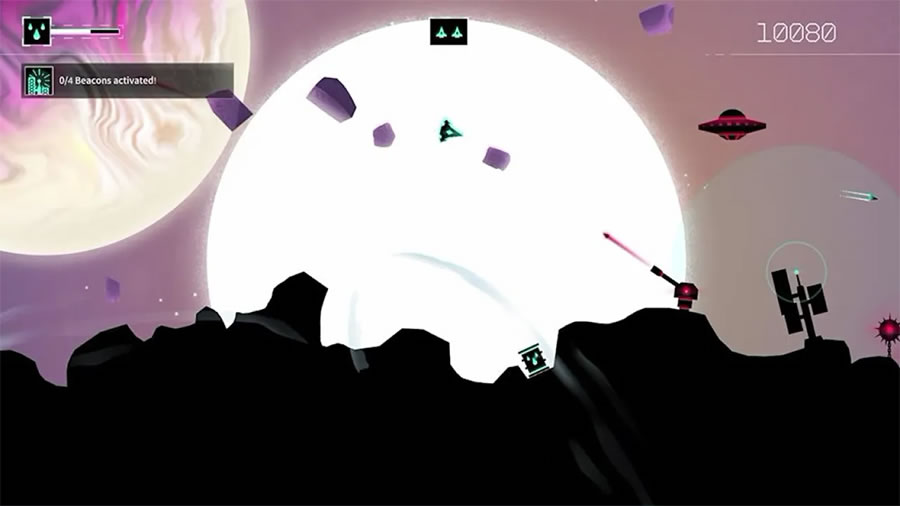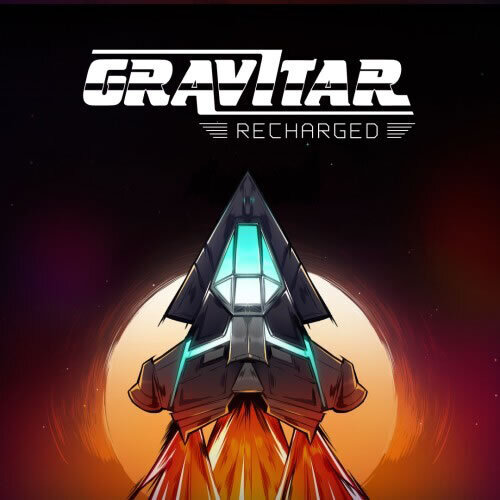- CLASSIC MAGAZINES
- REVIEW CREW
A show recapping what critics thought back
when classic games first came out! - NEXT GENERATION'S BEST & WORST
From the worst 1-star reviews to the best
5-stars can offer, this is Next Generation! - NINTENDO POWER (ARCHIVE)
Experience a variety of shows looking at the
often baffling history of Nintendo Power! - MAGAZINE RETROSPECTIVE
We're looking at the absolutely true history of
some of the most iconic game magazines ever! - SUPER PLAY'S TOP 600
The longest and most ambitious Super NES
countdown on the internet! - THEY SAID WHAT?
Debunking predictions and gossip found
in classic video game magazines! - NEXT GENERATION UNCOVERED
Cyril is back in this spin-off series, featuring the
cover critic review the art of Next Generation! - HARDCORE GAMER MAGAZING (PDF ISSUES)
Download all 36 issues of Hardcore Gamer
Magazine and relive the fun in PDF form!
- REVIEW CREW
- ELECTRONIC GAMING MONTHLY
- ELECTRONIC GAMING MONTHLY RANKS
From Mario to Sonic to Street Fighter, EGM
ranks classic game franchises and consoles! - ELECTRONIC GAMING MONTHLY BEST & WORST
Counting down EGM’s best and worst reviews
going year by year, from 1989 – 2009! - ELECTRONIC GAMING BEST & WORST AWARDS
11-part video series chronicling the ups and
downs of EGM’s Best & Worst Awards!
- ELECTRONIC GAMING MONTHLY RANKS
- GAME HISTORY
- GAME OVER: STORY BREAKDOWNS
Long-running series breaking down game
stories and analyzing their endings! - A BRIEF HISTORY OF GAMING w/ [NAME HERE]
Real history presented in a fun and pithy
format from a variety of game historians! - THE BLACK SHEEP
A series looking back at the black sheep
entries in popular game franchises! - INSTANT EXPERT
Everything you could possibly want to know
about a wide variety of gaming topics! - FREEZE FRAME
When something familiar happens in the games
industry, we're there to take a picture! - I'VE GOT YOUR NUMBER
Learn real video game history through a series
of number-themed episodes, starting at zero! - GREAT MOMENTS IN BAD ACTING
A joyous celebration of some of gaming's
absolute worst voice acting!
- GAME OVER: STORY BREAKDOWNS
- POPULAR SHOWS
- DG NEWS w/ LORNE RISELEY
Newsman Lorne Riseley hosts a regular
series looking at the hottest gaming news! - REVIEW REWIND
Cyril replays a game he reviewed 10+ years
ago to see if he got it right or wrong! - ON-RUNNING FEUDS
Defunct Games' longest-running show, with
editorials, observations and other fun oddities! - DEFUNCT GAMES QUIZ (ARCHIVE)
From online quizzes to game shows, we're
putting your video game knowledge to the test!- QUIZ: ONLINE PASS
Take a weekly quiz to see how well you know
the news and current gaming events! - QUIZ: KNOW THE GAME
One-on-one quiz show where contestants
find out if they actually know classic games! - QUIZ: THE LEADERBOARD
Can you guess the game based on the classic
review? Find out with The Leaderboard!
- QUIZ: ONLINE PASS
- DEFUNCT GAMES VS.
Cyril and the Defunct Games staff isn't afraid
to choose their favorite games and more! - CYRIL READS WORLDS OF POWER
Defunct Games recreates classic game
novelizations through the audio book format!
- DG NEWS w/ LORNE RISELEY
- COMEDY
- GAME EXPECTANCY
How long will your favorite hero live? We crunch
the numbers in this series about dying! - VIDEO GAME ADVICE
Famous game characters answer real personal
advice questions with a humorous slant! - FAKE GAMES: GUERILLA SCRAPBOOK
A long-running series about fake games and
the people who love them (covers included)! - WORST GAME EVER
A contest that attempts to create the worst
video game ever made, complete with covers! - LEVEL 1 STORIES
Literature based on the first stages of some
of your favorite classic video games! - THE COVER CRITIC
One of Defunct Games' earliest shows, Cover
Critic digs up some of the worst box art ever! - COMMERCIAL BREAK
Take a trip through some of the best and
worst video game advertisements of all time! - COMIC BOOK MODS
You've never seen comics like this before.
A curious mix of rewritten video game comics!
- GAME EXPECTANCY
- SERIES ARCHIVE
- NINTENDO SWITCH ONLINE ARCHIVE
A regularly-updated list of every Nintendo
Switch Online release, plus links to review! - PLAYSTATION PLUS CLASSIC ARCHIVE
A comprehensive list of every PlayStation
Plus classic release, including links! - RETRO-BIT PUBLISHING ARCHIVE
A regularly-updated list of every Retro-Bit
game released! - REVIEW MARATHONS w/ ADAM WALLACE
Join critic Adam Wallace as he takes us on a
classic review marathon with different themes!- DEFUNCT GAMES GOLF CLUB
Adam Wallace takes to the links to slice his way
through 72 classic golf game reviews! - 007 IN PIXELS
Adam Wallace takes on the world's greatest spy
as he reviews 15 weeks of James Bond games! - A SALUTE TO VAMPIRES
Adam Wallace is sinking his teeth into a series
covering Castlevania, BloodRayne and more! - CAPCOM'S CURSE
Adam Wallace is celebrating 13 days of Halloween
with a line-up of Capcom's scariest games! - THE FALL OF SUPERMAN
Adam Wallace is a man of steel for playing
some of the absolute worst Superman games! - THE 31 GAMES OF HALLOWEEN
Adam Wallace spends every day of October afraid
as he reviews some of the scariest games ever! - 12 WEEKS OF STAR TREK
Adam Wallace boldly goes where no critic has
gone before in this Star Trek marathon!
- DEFUNCT GAMES GOLF CLUB
- DAYS OF CHRISTMAS (ARCHIVE)
Annual holiday series with themed-episodes
that date all the way back to 2001!- 2015: 30 Ridiculous Retro Rumors
- 2014: 29 Magazines of Christmas
- 2013: 29 Questionable Power-Ups of Christmas
- 2012: 34 Theme Songs of Christmas
- 2011: 32 Game Endings of Christmas
- 2010: 31 Bonus Levels of Christmas
- 2009: 30 Genres of Christmas
- 2008: 29 Controls of Christmas
- 2007: 34 Cliches of Christmas
- 2006: 33 Consoles of Christmas
- 2005: 32 Articles of Christmas
- 2004: 31 Websites of Christmas
- 2003: 29 Issues of Christmas
- 2002: 28 Years of Christmas
- 2001: 33 Days of Christmas
- NINTENDO SWITCH ONLINE ARCHIVE
- REVIEW ARCHIVE
- FULL ARCHIVE
Gravitar: Recharged
Now that we’re six games into Atari’s initiative to Recharge their classic arcade titles, I worried that the developers might be spinning their wheels and simply repeating the same trick over and over again. After all, if you go back and watch my Centipede, Black Widow and Asteroids reviews, you’ll find me complaining about all the same problems – the lack of unique backgrounds, the limited arcade modes, etc. However, that’s how I felt before I played their newest installment, Gravitar: Recharged, an updated version of a lesser-known shooter that originally bombed when it was first released. Of all the Atari classics that could benefit from this type of facelift, few are better candidates than this oddball shooter. That’s why I’m excited to say that Gravitar is not only the best in the Recharged series, but it’s the redemption story we’ve waited four decades to see.
Gravitar was one of those games that was way ahead of its time. It was an Asteroids-style shoot ‘em up with a wide variety of level types and a gravitational pull mechanic that you first had to wrap your head around before you could even hope of earning a high score. As it turns out, this was too much for gamers in the early 1980s, who largely found the game frustrating and hard to play. As a result, Atari offered a conversion kit that turned Gravitar into Black Widow, effectively hammering the final nail in the ambitious shooter’s coffin.
Now, fourty years later, time has been kind to Gravitar. While it’s still hard to control and it’s clear the developers bit off more than they could chew, we’ve seen a lot of games take inspiration from the gravity-themed shooter and prove that Atari was actually onto something. And that brings us to this Recharged upgrade, the game Gravitar was trying to be back in 1982. This is a sharp-looking update that improves on the gameplay, streamlines the levels and builds on the formula in some fun and exciting ways.
For as ambitious as the game was at the time, it also had an incredibly simple set-up. You control a triangle-shaped spaceship that travels around the galaxy and landing on planets, where you’ll have to perform some sort of simple shoot ‘em up task. Some planets will want you to activate a bunch of beacons, steal important plans from the enemies, blow up a reactor or simply kill all the bad guys in the level. Once you complete your task, you’ll leave the planet and search for the next challenge. And you’ll keep doing this until you run out of lives, at which point you’ll have to start over from the beginning.
The fact that you’re constantly completing different types of missions helps to set this game apart from Asteroids and other shooters that have recently been Recharged. Those games tend to have a single goal, where there’s a real sense of randomness in Gravitar. Each mission forced you to play a bit differently, with some keeping you in claustrophobic corridors and others allowing you to use the wide-open space to your advantage. You’ll also find that some levels will have an aggressive gravitational pull, while others won’t have one at all. And just because you’re able to sneak through the enemy lines and complete the mission, you have to remind that you still need to escape without running out of gas. That’s easier said than done.
To be fair, the gameplay does take some getting used to. Gravitar shares a lot in common with Asteroids, since you basically only control the ship by turning 360 degrees and thrusting the direction you want to go. That’s hard enough when you’re in the gravity-free reaches of space, but once you get close to a planet, you’ll be in a constant struggle to keep your ship going the right direction. I will admit, I spent the first half-hour of this game crashing and being frustrated. But there came a point when it all clicked and I started to appreciate the learning curve. It finally got to the point where it became second nature and I could whip through the tight caverns without worrying too much about ramming the rocky walls.
Believe it or not, it wasn’t the moving around that I found to be the most difficult part of Gravitar, but rather the aiming. The default weapon is a burst cannon that shoots three rockets, one right after another, with a brief pause between firing. The pointy end of the triangle ship should help you aim, but I found that I missed a lot more shots than I hit. But even with this handicap, I was still able to effectively take down the enemies, thanks to rockets that go the entire length of the screen, as well as a number of power-ups you can pick up around the stages.
Much like the rest of the Recharged line, Gravitar is split between a standard arcade mode and a bunch of extra challenge missions. These extra missions tend to be the sole reason to buy these games, but I think the two modes are pretty evenly split here. What you’ll find is that the extra challenge missions are basically just harder versions of the levels you play in the arcade mode. It’s the same tasks, including activating beacons, stealing important plans, blowing up reactors and killing a bunch of enemies. Don’t get me wrong, these stages are fun and I love the extra challenge they provide, but I actually prefer playing them in the confines of the arcade mode.
Speaking of which, that’s easily one of the biggest surprises of this entire game. In past Recharged titles, the arcade mode felt like an afterthought, something slapped on that always seemed to fail to capture the magic of the original arcade hit. That’s not the case here. Not only is the arcade mode surprisingly deep and fun, but it finally gave you options on how you want to play. If you want an extra challenge, you can modify the game to only give you one live or no shields. These were the sorts of options that were completely missing from games like Centipede and Asteroids.
And that’s not the only major improvement. One of my biggest criticisms was that the backgrounds never changed and every level looked the same. Not so with Gravitar. Instead of the typical grid background, this game gives us gorgeous space-themed artwork that show off different planets and stars. And it’s not the same background, either, but rather a cool rotation of striking designs. The whole thing looks fantastic and suggests that the developers are finally listening to the critics.
But let’s not forget about the real story here. Sure, it’s great news that my complaints about the Recharged franchise aren’t going on deaf ears, but the bigger story is that Gravitar has finally been redeemed. It took Atari fourty years, but they finally made something good out of this game. They took a much-maligned shooter that people barely even remember and turned it into an action game I have no problem recommending.
HOME |
CONTACT |
NOW HIRING |
WHAT IS DEFUNCT GAMES? |
NINTENDO SWITCH ONLINE |
RETRO-BIT PUBLISHING
Retro-Bit |
Switch Planet |
The Halcyon Show |
Same Name, Different Game |
Dragnix |
Press the Buttons
Game Zone Online | Hardcore Gamer | The Dreamcast Junkyard | Video Game Blogger
Dr Strife | Games For Lunch | Mondo Cool Cast | Boxed Pixels | Sega CD Universe | Gaming Trend
Game Zone Online | Hardcore Gamer | The Dreamcast Junkyard | Video Game Blogger
Dr Strife | Games For Lunch | Mondo Cool Cast | Boxed Pixels | Sega CD Universe | Gaming Trend
Copyright © 2001-2025 Defunct Games
All rights reserved. All trademarks are properties of their respective owners.
All rights reserved. All trademarks are properties of their respective owners.





































